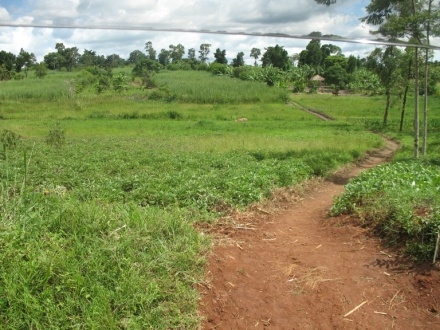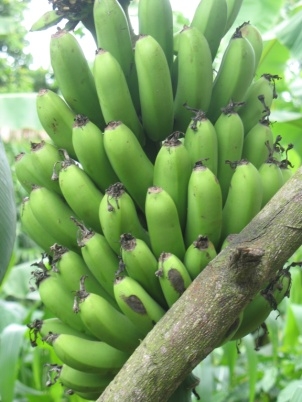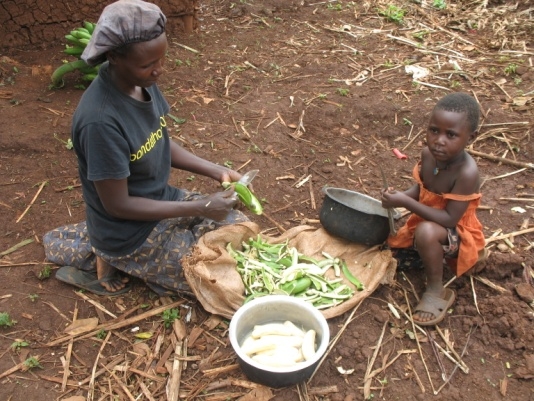In November of 2015, Janna VanNest and I journeyed to Uganda to check on several projects that the Eastern Sierra supports in rural areas around Jinga. Being located on the equator in Africa, this region has very favorable growing conditions so there was an amazing abundance of vegetation. Eighty-four percent of the population is rural and dependent on subsistence farming.
The principal crops that we observed were matoke (a starchy banana which is cooked), corn, sugar cane, beans and groundnuts (peanuts). Although there were plenty of coffee beans curing in the sun on the ground with chickens running through them, we never saw coffee bean plants.


We did drive by a few large fields of crops but most vegetables were grown in small plots just big enough to feed a family or two. The gardens usually had matoke, cabbage, beans and peanuts. These are the staples of their diet and grow vigorously. It is the women who plant, weed and harvest the crops, often with a baby on their backs. One frequently sees them in their gardens or on the road with a hoe over their shoulders or a basket of the harvest balanced on their heads.
Crops are densely planted with only small trenches between the rows to catch the rain water. Fortunately with these frequents rains, no irrigation is necessary. Additionally, very seldom was any variety of staking seen. Tomatoes and beans grow like bushes and matoke grows like bananas.
Even in the large fields, no farm equipment was to be seen. There were groups of manual laborers working the large fields with only a single person working in the small gardens. The tools we saw were hoes and machetes. The soil looks and feels like clay; thick, sticky red clay which colors everyone's feet a deep red. This mud can be so treacherous that the roads are often closed to motorized and bicycle traffic.


Thanks to a partnership with our local Von's store, their surplus seeds have been sent to Uganda for the past several years. Now the villagers have the opportunity to grow a much wider variety of vegetables. However, as they are unfamiliar with many of the vegetables, one of my pleasures was to show and prepare beets and eggplants.
A large group of children and women eagerly watched me prepare the vegetables which were then cooked on a small fire. 
Farming is very much a family venture, the small plots being worked by hand and with children helping with every aspect including harvesting, carrying, sorting, fetching water and gathering burnable materials. As wells are still infrequent and people often walk miles to a water source, water for drinking, cooking and washing is a precious resource.
As for flower gardens, most were in the towns and cities where life was more than subsistence. To this end, we saw many nurseries with their plants in pots and containers along the paved roads. Again, with the frequent rains, it appeared as if little maintenance was required. However, in the rural areas there were few cultivated flowers to be seen since what is much more important there, is the cultivation of edible, easy growing plants to supply their one meal a day diet.
In Uganda there is an abundance of community sharing and hard work that sustains their lives.
